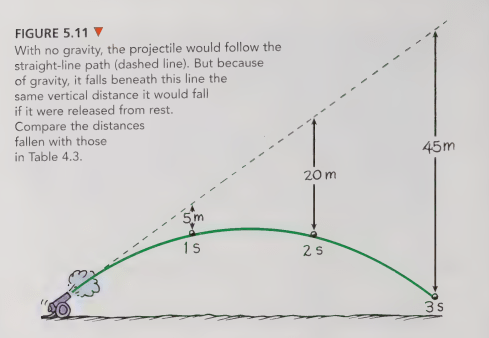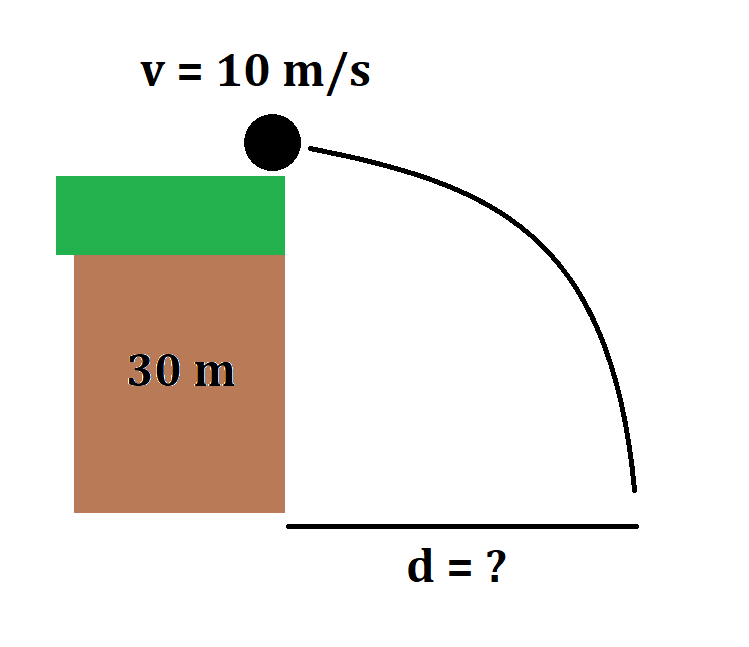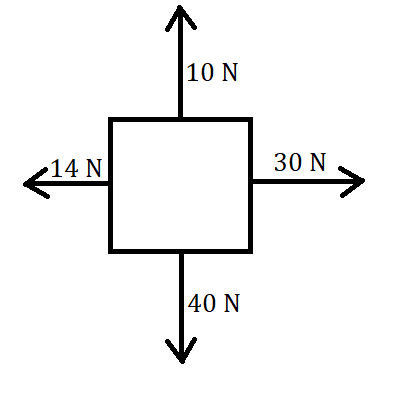This is a term for anything that you can change or measure in an experiment.
Variable
Objects don't change their state of motion without this present.
Aristotle divided up the laws of physics into these two types of motion.
Natural and Violent Motion
True or false: Depending on your perspective, an object can have different velocities, or even no velocity, and each measurement can be correct.
True, because motion is relative.
True or false: For a projectile on Earth, the horizontal speed is most important for determining how long the object flies for.
False, it is the vertical direction
This is the term for an educated guess about some aspect of the natural world, which can later be tested and built on.
Hypothesis
Force is a vector, which means it has both _______ and _________.
Magnitude and direction
Objects do not change their speed or direction without a force to make them do so. In other words, they resist changes to their state of motion. What is the term for this property?
Inertia
One is the speed at a single instant, one is the speed over the whole trip.
True

This is the two-word term for the element of the experiment that is changed by the experimenter, such as the number of pasta noodles in the Marble Cup experiment.
To find the sum of two vectors pointing in different directions, we can arrange them into this shape, and find the diagonal, which is the sum of the vectors.
Parallelogram

Galileo proved that natural motion doesn't exist, and all objects fall at the same rate, with what experiment?
Dropping two objects from the top of a tower.

True or false: A car driving around in a circle at a constant speed of 30 m/s is undergoing a constant acceleration.
True, because it is changing direction.
What is the direction of the acceleration of a projectile at the top of its arc?
Straight Down
This is a term for the aspects of an experiment that need to be held constant and unchanged in order for the experiment to clearly communicate its data.
Control Variables
Math Question:
An airplane flies due north at 300 m/s, while a wind blows due east at 400 m/s. What direction and at what speed is the airplane travelling, in total.
500 m/s Northeast
Galileo proved that violent motion doesn't exist, and horizontal motion can last forever, with which experiment?
Rolling balls down ramps.

An object that falls freely through the air will speed up over time, and its speed will increase by this amount every second.
9.8 or 10 m/s^2
A projectile at the top of a 30 m cliff is kicked horizontally with a speed of 10 m/s. How far from the base of the cliff does it land?
30 = (1/2)*10*t2
6 = t2
t = sqrt(6) = 2.45 s
d = 10*2.45
d = 24.5 m
In an experiment, it is found that increasing one variable causes another to decrease by the same factor. What two-word term describes this relationship?
Negative Correlation
This object is subject to 4 different forces, as indicated below. What is the net force, and in what direction does it go?
34 N, Down and the the right
How are mass and weight different from each other?
One is a measure of the inertia of an object, and one is the measure of gravity's pull on the object.
A basketball player is able to jump vertically and stay in the air for 0.6 seconds. How high does this person reach during their jump?
d = (1/2) a*t^2
t = 0.6/2 = 0.3
d = 1/2*10*0.3^2
d = 0.45 m = 45 cm
A ball is kicked diagonally upwards with both a vertical and horizontal velocity of 20 m/s.
How much distance does the ball cover before hitting the ground?

t = 4 s
d = 20*4 = 80 m